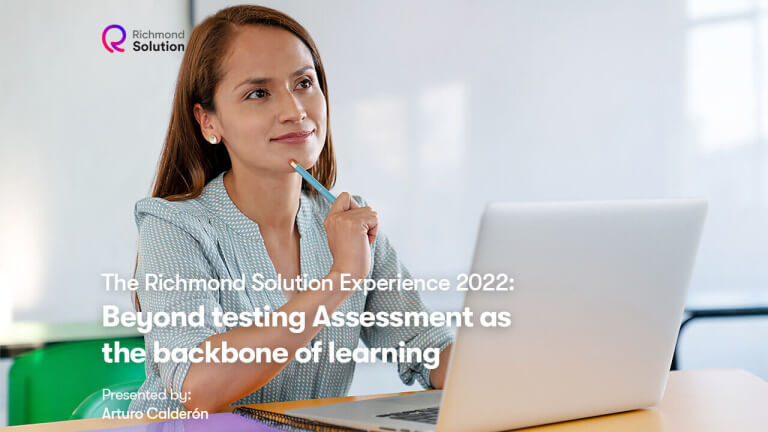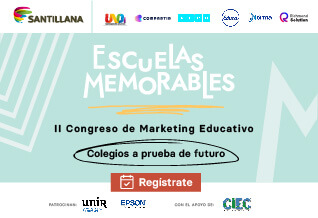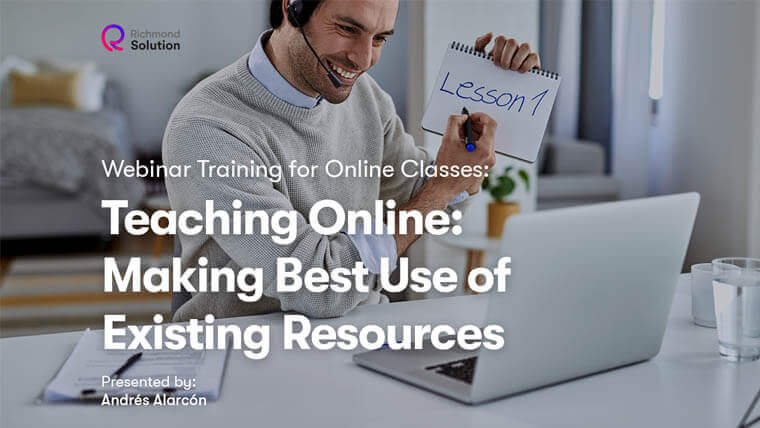Technologies that are effective in face-to-face and online classes
Since the transition last spring to online learning, all around the world, there has emerged a blending of ways that lessons are given. In some countries, classes are given, still, mostly online. In other countries students are back to having face-to-face classes.
By: Russell Stannard
Blended Learning: Online and face-to-face
Since the transition last spring to online learning, all around the world, there has emerged a blending of ways that lessons are given. In some countries, classes are given, still, mostly online. In other countries students are back to having face-to-face classes. In still other countries, a form of ‘hybrid’ teaching is taking place. This is when half the students receive lessons in the physical classroom, while the other half are at home, participating via the internet. This last model has arisen from the necessity of keeping the number of students in the physical classroom at a reduced number for health reasons.
Technology that can facilitate blended learning
Many teachers use Google Meet and Zoom to give their online classes. These and many others are valid either in face-to-face lessons (presenting work to do outside of the classroom), and in fully online form of teaching. The teacher is the driving force behind the technology, so it matters less which one you choose than how well you know how to use it effectively. Having said this, there are certain technologies that are more appropriate and adaptable to any of the three models mentioned above. One of the best to use in either the physical, online or blended lesson, is Mentimeter.
The free version of Mentimeter
Mentimeter can be used in its basic level for free. It is a tool that allows students to quickly answer questions, add comments, order or organise content through an online link. It is ideal for checking students understanding of newly delivered content. It is often used for formative assessment but is also useful for initial diagnotic tests, quizzes and warmers. Mentimeter has three key strong points. Even the free version offers a lot of options. There is also a nice variety of activities that students can work on, plus Mentimeter makes it very easy to connect to the activities.
When a teacher makes a quiz, collaborative activity or opinion sharing activity, she can either share a link with the students so they can access the activity online or share a code so that they can access the activity via their SMART phones. This makes it ideal for most educational tasks. If the students are in class, they can pull out their SMART phones, add the code and then do the activity. If the students are in a Zoom lesson (or any other similar tool), the teacher can share the link and the students can also engage with the activity.
Mentimeter is actually useful in any presentation context. Let’s say you have been presenting for the last 10 minutes and want to check that your students have been following you. If you have pre-prepared some questions for the students to answer, you can share the code and the students can engage with the questions. The great thing about Mentimeter is that the answers from the activity are immediaetly collected and collated together in Mentimeter and so the teacher has immediate feedback on how the audience has responded.
Range of activity types
The variety of activity types in Mentimeter covers a nice range of contexts. You can collect students’ opinons, get them to vote on options, provide direct questions for them to answer, create multiple choice questions or even set up ranking type questions. (You are not limited to only one question type.) You can add a series of questions together and add some nice variety to your activities. So when the students access the content, it may actually include more than one activity for them to engage with.
Examples in ELT
In a language learning context Mentimeter has loads of uses. Here are just a few simple examples.
- The students have just watched a video. The teacher can put the students into pairs, tell one student in each pair to open up their SMART phone. The students can then work in pairs and decide on the correct answers. After the activity, the teacher can display the results and talk about the correct and incorrect answers.
- Before starting a new topic, the teacher creates a diagnostic test to see what the students understand about the topic.
- The teacher wants to brainstorm the students on vocabulary around transport. The teacher sets up an activity which allows each student in the class to add up three words. The students log into the activity with their phones using the code and add in their ideas. Immediately the teacher can display all the words suggested by the teacher in one big word cloud on the screen and then do a related activity with all the words.
- The teacher wants to gauge the student’s opinions on ‘reducing pollution in cities.’ The teacher creates a Mentimeter activity which asks for the students opinions. Students in class use their SMART phones to engage by going to Menti.com and writing in the code. They can then input their ideas. Students at home can enage with the same activity by accessing the link. All the information from both groups of students is collected in the same place and the teacher can access and diplay all the student’s ideas immediately.
Displaying information
When students intput their answers, add comments, vote or make choices, the data from the students immediately comes back to the teacher. Mentimeter offers a number of ways for this data to be presented through tables, graphs, pie charts or even in ‘teleprompter’ type displays. How the data is displayed obviously depends on the types of questions. It is worth thinking about what you are going to do with this data. It is often the data that is most valuable part of the activity. You can either display the data in class via a projector or screen share the data if you are teaching online. For example, if you have collected student’s opinions together on a subject, you display all the opinions on the screen and get the students to choose their favourite answer. If you have got the students to vote on something, you might ask the students to write a short report on the data from the vote. There is a whole range of activities you can do and each one can be facilitated by the fact the teacher is able to immediately display the answers on the screen.
Hybrid teaching and collaboration
As I mentioned at the start of this post, some teachers are delivering in what is being called a ‘hybrid mode.’ This means they teach a group of students in class while other members of the class are receiving the lesson online. Technically this means that the lesson has to be shared online, so that students at home can follow the lesson too. Often this means that the students at home and the students in class have little real contact with each other, despite the fact they are actually in the same lesson. Mentimeter is a useful tool to use to ‘bridge’ this gap between the students at home and the students in class. For example if we collect the students opinions on ‘the use of plastic, the students in class can acces the activity via their SMART phones and the students at home can access the same activity via the link the teacher shares. This is ideal as it means there is a real ‘shared experience’ in the class and the data that is collected will be a combination of answers from the students in the lesson and answers from the students accessing the class online.
The early experiences from observations of hybrid classes is that students in class and students at home have very little contact. It can also mean that the teacher tends to focus a lot on the online class, since they need to check that the technology is working. The teacher often sets one activity for the students to do in the class and one for the students to do at home, so contact betwen the two groups can end up being minimal. Mentimeter can be quite effective in this way as it means all students can be working on the same activity. It does of course require the students in class to be able to access their SMART phones.
Conclusions
There are many technologies available for teachers to use but I particulary like technologies that offer a variety of options. When you learn to use Mentimeter you have access to whole array of activities that can be used in a variety of contexts. The simplicity of the tool means it is easy to access the activities on a variety of different devices. It is therefore ideal for using in class, online or even in a conference or training session. Teachers can get immediate access to the data and the display options mean that the teacher can easily display the results from the students. It is ideal for both online teaching and face to face contexts but interestingly it is also a tool that works very well in a hybrid class. What’s more the technology has free option which is very good. Want to learn how to use Mentimeter?
This video will help you




